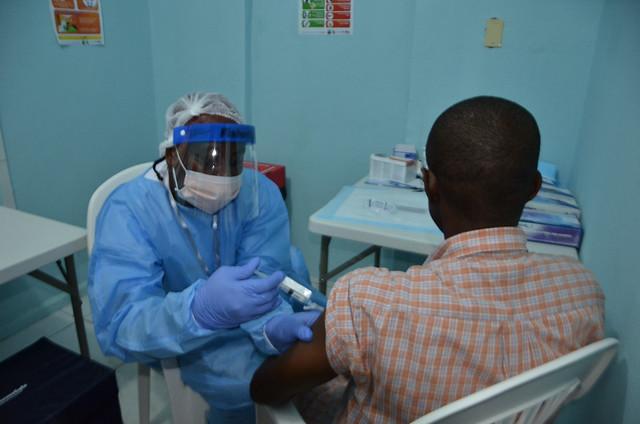Today SAGE, the World Health Organization's Strategic Advisory Group of Experts, released new guidelines to address several growing concerns about vaccination strategies currently being used in Democratic Republic of the Congo (DRC) Ebola outbreak.
Despite vaccinating more than 111,000 people with Merck's rVSV-ZEBOV, a highly protective unlicensed Ebola vaccine, the outbreak has worsened dramatically in the last month due to violent attacks and a communication breakdown between community members and response workers.
And cases with no connection to an ongoing transmission chain are increasingly being diagnosed.
In light of these developments, SAGE is recommending the use of a new vaccine, Johnson & Johnson's adenovirus 26 vectored glycoprotein/MVA-BN (Ad26.ZEBOV/MVA-BN), and a dose-sparing strategy with rVSV-ZEBOV, which will provide a smaller dose of the vaccine to case contacts.
"We know that vaccination is saving lives in this outbreak," said WHO Director-General Tedros Adhanom Ghebreyesus. PhD. "We also know that we still face challenges in making sure the contacts of every case receive the vaccine as soon as possible. These recommendations account for ongoing insecurity and incorporate feedback from experts and from the affected communities that will help us continue to adapt the response."
Dose changes should not limit efficacy
Since August, a ring vaccination strategy has been used in North Kivu and Ituri provinces, which demands that close case contacts and front line health workers are the first to receive the vaccine, followed by a widening circle of contacts' contacts.
SAGE's new proposal will have people at highest risk (contacts and contacts of contacts) receiving 0.5 mL of vaccine instead of 1 mL. This dosage is equal to the dose used in the successful Ebola ring vaccination trial in Guinea in 2015, and is expected to provide the same level of protection, SAGE said.
SAGE also recommends vaccinating a tertiary set of people: those who live in villages and neighborhoods where cases have been reported within the past 21 days, but are not case contacts or contacts of contacts. Those people could be administered rVSV-ZEBOV at a dose of 0.2 mL (one-fifth of the current dose).
"Increasing access to vaccination in the broader community may help enhance community acceptance of the vaccine and other control measures," SAGE said.
To address issues of insecurity and violence, SAGE recommends vaccination happen at "pop-up" stations in remote villages, and not at contact's homes.
Finally, SAGE said they recommend recruiting and training more Congolese medical staff to carry out the vaccinations. "The goal is that by end of the month a majority of vaccination team members are healthcare workers, doctors, and medical students from affected communities who also speak the local languages," SAGE said.
More than 100 cases in first week of May
The DRC's ministry of health will likely confirm 13 more cases of Ebola today, raising the outbreak total to 1,585, according to data on the WHO online Ebola dashboard.
According to the latest update from the WHO's African regional office, there have been 115 Ebola cases confirmed since Apr 28, including 98 deaths.
"Katwa is still the main focus of the outbreak, reporting 41% (121/292) of all confirmed cases in the past 21 days," the WHO said. Two more health workers have also been diagnosed as having Ebola, raising the total number of affected health workers to 94, with 33 deaths.
Besides Katwa, Beni, Butembo, Kalunguta, Mandima, Katwa, Mabalako, Musienene and Vuhovi have reported new cases within the last week, and bed occupancy has been reached at the Mangina Ebola treatment center and the Kayna transit center.
See also:
May 7 WHO SAGE recommendations
May 5 WHO regional update
WHO online Ebola dashboard















